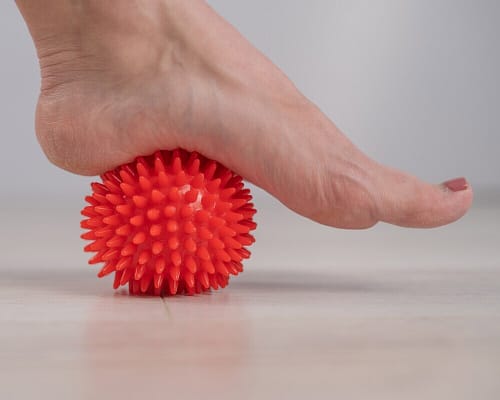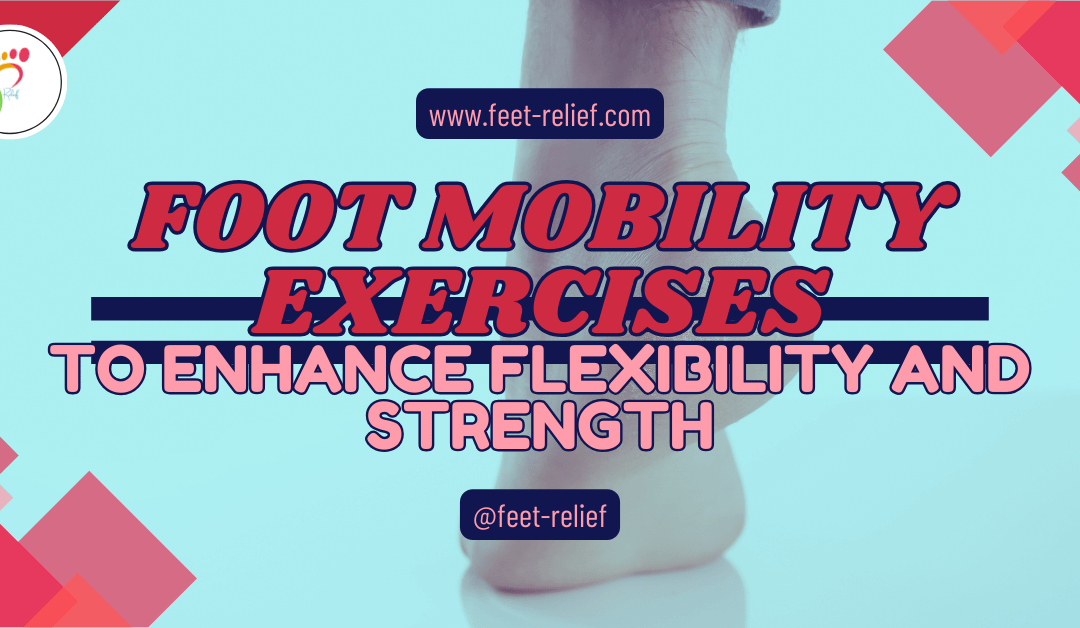Feet-Relief is supported by our audience. When you purchase through one of our links, we may earn a small affiliate commission. As an Amazon Associate I earn from qualifying purchases.Your cost is not affected.
As we age, we think about our balance and mobility more and more. I know that my friends and I sometimes discuss ways to keep active and avoid falls. So we came up with some foot mobility exercises to improve range of motion, balance, and overall health.
Foot Mobility Exercises and Range of Motion
Foot mobility might not be the first thing that comes to mind when thinking about staying healthy, but it’s a big deal. Those feet aren’t just for standing or walking—they’re the foundation that supports everything above them. When they move freely, you’re not only more comfortable, but you also set yourself up for better body function overall.

Poor foot mobility can lead to various issues. It’s like a domino effect. Imagine having tight calves and chronic back pain—yup, those can often trace back to foot problems. The body is this interconnected web, and when something’s off down low, it can throw off the whole system.
Better range of motion in your feet isn’t just about avoiding pain. It means more energy and freedom in daily activities like going for a jog, exploring trails, or even just playing with your kids at the park. Plus, who doesn’t want to feel more grounded and stable when moving around?
These days, with many of us sitting at desks or lounging on the couch, our feet don’t get the love they deserve. This sedentary lifestyle leaves our feet stiff and out-of-shape. We’ve got to change that vibe and get things moving.
How Foot Mobility Affects Performance and Posture
When it comes to athletic performance, foot mobility often takes center stage. Imagine trying to run a race on stiff, inflexible feet—your speed, agility, and endurance probably wouldn’t be up to par. Those little muscles in your feet are crucial in getting the most out of any physical activity.
Think about your posture, too. Your feet are the foundation of your body’s structure. If they’re not moving well, it can lead to poor posture, which then invites a host of other problems. Maybe you’re struggling with slouching or improper alignment; limited foot mobility could be a hidden culprit, affecting how you stand and move.
Foot mobility ties seamlessly into balance and stability. A flexible foot helps keep you steady on your feet, reducing the chances of falling or getting injured. Improving mobility isn’t just a short-term fix, either—it’s a long-term investment in your well-being.
Preventing injuries is another big win here. When your feet move as they should, they’re less likely to experience strains or sprains. It means fewer interruptions to your workout routine or daily life because who wants to deal with downtime?
Bringing some flexibility to your feet can have a ripple effect on your athletic performance and help you maintain a posture that’s healthy and strong. It’s all about connecting the dots between foot health and overall body performance.
Top Foot Mobility Exercises to Practice
Getting your feet moving can actually be fun and pretty straightforward. Start with toe stretches—they help keep things loose and flexible. Just grab your toes and gently pull them back for a nice stretch. It’s a simple move, but it does wonders.
Ankle circles are another great exercise that’s super easy to throw into your day. You can do them while sitting or standing. Rotate your ankles in circles, both clockwise and counterclockwise, to boost range of motion and cut down on that stiff feeling.
Heel raises are not just for calf muscles; they also help with foot strength and range. Stand on your tiptoes and then slowly lower down. Do a few sets while holding onto a counter or chair if you need that extra bit of balance.
Don’t forget about rolling your feet! A lacrosse ball or even a water bottle works great. Roll the ball under your foot to ease fascia tension. It’s like a mini massage that refreshes tired feet.
Try these exercises regularly. With a little commitment, they’re bound to make a noticeable difference. It’s about setting your feet—and yourself—up for success.
Incorporating Foot Exercises Into Your Daily Routine
Making foot exercises a regular part of your day doesn’t have to be a chore. Integrating them into moments where you’re already in motion can make a big difference. For instance, do some toe stretches while brushing your teeth or perform heel raises while you’re waiting for the coffee to brew.
Consistency is key when it comes to any exercise routine. By incorporating simple foot workouts into your routine, you’re setting up a path to stronger and more flexible feet. A little bit every day goes a long way.
Tailor these exercises to fit your unique needs and fitness level. If you’re just starting out, keep it simple and slowly build up intensity. On days when you’re feeling more energetic, up the ante and push yourself a little more.
For those looking to increase the impact, try out some modifications. For example, use a resistance band when doing ankle circles or add some weight to your heel raises. These small tweaks can heighten effectiveness and results.
It’s all about weaving these exercises naturally into everyday life, creating habits that are easy to maintain and truly beneficial for foot health.
Tools and Resources to Enhance Foot Mobility
Props can be real game-changers in your foot exercise routine. Consider using a resistance band to add a little challenge to your stretches or a balance board for working on stability. Simple tools like these can amplify your mobility gains.
In this digital age, why not use technology to your advantage? Check out various apps and online tutorial videos that provide guided workouts tailored specifically for foot mobility. Having a virtual coach in your pocket makes exercising more accessible.
For those looking for expert guidance, consulting with a physiotherapist or podiatrist can offer personalized advice. They can evaluate your current mobility and recommend specific exercises or treatments to meet your goals.
There’s a lot of info out there on foot exercises, but it’s important to stay informed and cautious about what you try. Stick with credible sources and avoid gimmicky products or trends without proven benefits.
Combining physical tools with expert advice offers a balanced approach to improving foot mobility, ensuring you make the most of your efforts.
Long-term Benefits of Improved Foot Range of Motion
Taking care of your feet can truly boost your quality of life over the long haul. Healthy feet mean you can keep up with the activities you love, from hiking that epic trail to simply enjoying a walk around the neighborhood.
Better foot mobility isn’t just a short-term win; it helps fight off age-related stiffness and deterioration as you get older. Staying mobile preserves independence and keeps you active, which means more adventures await.
Physical activity becomes easier when your feet are on point. Improved range of motion can enhance your sports performance, whether you’re perfecting your yoga poses or setting new personal running records.
Hearing from others who’ve experienced the benefits of better foot mobility can be really inspiring. People often share stories of how their lives changed after prioritizing foot health. It’s a genuine shift that underscores the importance of looking after those hardworking feet.
So, by investing the time in some simple exercises and lifestyle tweaks, you’re not just caring for your feet; you’re enhancing your entire well-being over the course of your life.
Amazon and the Amazon logo are trademarks of Amazon.com, Inc, or its affiliates.













